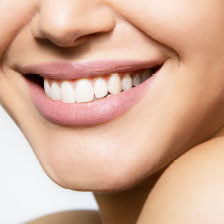 What does it mean to say that there are different types of tooth discoloration? When it comes to whitening your teeth, distinguishing the two types can be important. A cosmetic whitening treatment is meant to address extrinsic stains. However, intrinsic stains will not show the kind of change you are looking for when you agree to this treatment. This form of discoloration can be solved with porcelain veneers, which completely mask the front of your teeth behind what appears to be flawless, white teeth. Alternatively, you could undergo dental bonding, a procedure where composite resin is bonded to your teeth. The resin’s color can be blended so that it will match with your other teeth.
What does it mean to say that there are different types of tooth discoloration? When it comes to whitening your teeth, distinguishing the two types can be important. A cosmetic whitening treatment is meant to address extrinsic stains. However, intrinsic stains will not show the kind of change you are looking for when you agree to this treatment. This form of discoloration can be solved with porcelain veneers, which completely mask the front of your teeth behind what appears to be flawless, white teeth. Alternatively, you could undergo dental bonding, a procedure where composite resin is bonded to your teeth. The resin’s color can be blended so that it will match with your other teeth.
Is Your Tooth Discoloration Extrinsic Or Intrinsic?
Your dentist can review your teeth during an appointment and help you understand what form of discoloration you have. Extrinsic discoloration comes from outside agents – think stains from coffee or red wine, or from using tobacco. These stains are located in your enamel. Intrinsic stains are developed from within. You could have intrinsic discoloration form after a medical treatment, or from certain medications. It can also happen after an injury to a tooth, as in some instances an injury will stimulate the production of more layers of dentin.
Other Factors To Consider When Addressing Your Smile
Whitening agents will not restore the color of a dental crown, and it is not possible to bond a veneer to one. If the color of your crown is a problem, you can talk to your dentist about the options available to you.







